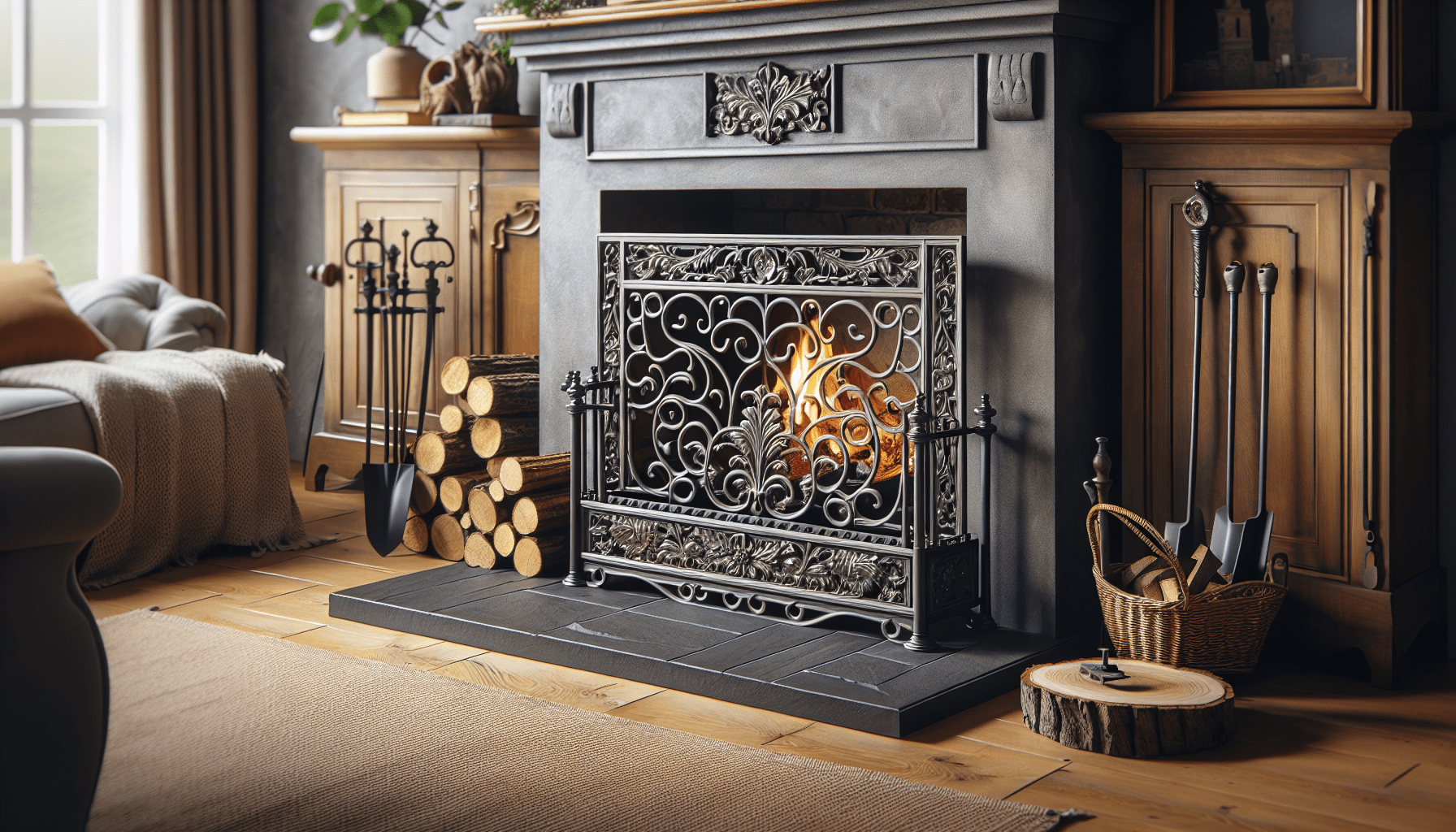What do you imagine when you think of a cozy evening by the fire? Perhaps you see yourself nestled up on a comfy chair, a warm blanket draped over your legs, a cup of cocoa in hand, and the soft crackle of wood burning in a fireplace. But have you ever stopped to consider the unsung hero of this heartwarming scenario—the fireplace grate?

Understanding the Fireplace Grate
A fireplace grate is more than just a simple accessory; it’s a crucial component that enhances your experience and ensures safety in your home. At first glance, it might appear to be a mundane metal structure, but it carries significant functionality that is worth exploring.
What Is a Fireplace Grate?
Simply put, a fireplace grate is a framework that sits in the base of your fireplace, designed to hold firewood. While it may seem like a trivial item, it plays an important role in how your fire burns and how your fireplace functions.
Materials Used in Grates
Fireplace grates can be crafted from various materials, most commonly steel or cast iron. Each material offers unique benefits. For instance, steel grates may heat up quickly, providing immediate warmth, while cast iron retains heat for more extended periods, keeping your space warm long after the fire has dwindled.
The Functionality of a Fireplace Grate
Now, let’s unpack some of the essential functions that a fireplace grate serves. You’ll find that understanding these functions can elevate your fireplace experience significantly.
Improved Air Circulation
One of the primary roles of a fireplace grate is to enhance air circulation around the burning wood. By elevating the logs off the fireplace floor, a grate allows air to flow underneath. This airflow is crucial for a cleaner, more efficient burn. A well-ventilated fire reduces smoke and increases heat output, helping you achieve that warm, cozy atmosphere you cherish.
Better Burning Efficiency
When wood is placed directly on the fireplace floor, it tends to smolder instead of burn brightly. In contrast, a grate elevates the wood, allowing it to catch fire more effectively and burn hotter. Hot, well-burning wood produces less creosote—an annoying byproduct that can build up and lead to chimney fires over time. Less creosote means a cleaner chimney, which leads us to another important point: safety.
Safety Benefits of Using a Grate
Imagine, for a moment, a fire roaring in a fireplace with no grate. The wood could roll around, unevenly distributing heat, and even worse, could fall out and create a fire hazard in your home. A fireplace grate acts as a barrier, keeping logs in place while minimizing the risk of embers escaping.
Protecting Your Fireplace From Damage
Using a grate also protects your fireplace’s flooring. Direct exposure to intense heat from burning logs can cause cracks and discoloration over time. A grate acts like a buffer, preventing long-term damage to the inside of your fireplace. This not only extends the life of your fireplace but also maintains its aesthetic appeal.

Choosing the Right Fireplace Grate
So, how do you choose the right grate for your fireplace? There are several factors to consider, from size to material and even the type of fuel you plan to use.
Size Matters
Selecting the appropriate size for your grate is essential. A grate that is too large may not fit comfortably in your fireplace, while a grate that is too small won’t adequately hold the wood. Measure the width and depth of your fireplace and make sure to choose a grate that fits snugly.
| Fireplace Size | Grate Size |
|---|---|
| Small | 18″ – 24″ |
| Medium | 24″ – 30″ |
| Large | 30″ – 36″ |
Material Considerations
As mentioned earlier, grates are typically made of steel or cast iron. Think about your burning habits and the kind of maintenance you’re willing to invest in. Steel grates can be more affordable and lighter but may need replacing sooner than cast iron.
Aesthetics and Design
Many grates come with decorative elements that could enhance the visual appeal of your fireplace. Whether you prefer a sleek, modern design or a traditional ornate one, there will likely be a grate that complements your fireplace’s aesthetic.
Maintenance of Your Fireplace Grate
Like any tool in your home, your fireplace grate deserves a little TLC. Fortunately, maintaining a grate isn’t overly complicated, and a little effort can go a long way.
Regular Cleaning
To keep your grate in top shape, you should clean it regularly. After your fire has completely cooled—safety first!—remove any ashes and soot. For stubborn residue, a wire brush or sandpaper can help restore the metal’s shine. A clean grate not only looks more appealing but ensures optimal airflow for your fire.
Inspect for Damage
Over time, grates can become warped or rusted. Regular inspection can help you catch any potential problems early. If you notice significant rust or warping, it might be time to consider a replacement.
Safety Tips When Using a Fireplace Grate
While we’ve talked a lot about safety, there are specific precautions you can take to further ensure your fireplace experience is worry-free.
Always Have a Screen or Doors
Regardless of whether you use a grate, a fireplace screen or set of doors can provide an added layer of protection. Screens prevent embers from escaping while doors can help retain heat.
Choose the Right Wood
Not all wood burns the same. Ensure you’re using seasoned wood, maintaining that dry, aged quality that allows for a cleaner burn. Green or wet wood can produce more smoke and creosote, compromising both the function and safety of your fireplace.
Keep Housekeeping Items Nearby
Having basic fire safety tools like a poker, tongs, and a shovel nearby can make your fireside experience much more manageable. In case you need to adjust the wood or remove ashes, you’ll be prepared.
The Environmental Impact of Your Fire
There’s something wonderfully nostalgic about sitting by a crackling fire, but it’s important to acknowledge the environmental factors involved in burning wood.
Efficient Burning Practices
Being mindful of how much wood you use—especially when allowing airflow—can lessen your overall environmental impact. The more efficient your fire burns, the less smoke is produced, and the more heat you receive from it.
Choose Sustainable Wood Sources
If possible, opt for wood that has been sourced sustainably. Many places offer local, responsibly harvested firewood options that support eco-friendly practices.
Consider Alternatives
For those who may want to enjoy the ambiance of a fire without the drawbacks of burning wood, options like electric or gel fireplaces are available. These alternatives can provide a cozy glow while reducing environmental harm and upkeep.
Bringing It All Together
When it comes to enjoying those wonderfully cozy moments around your fireplace, never underestimate the importance of the fireplace grate. Now that you understand the features, benefits, and safe usage of grates, you’re equipped with the knowledge to make your fireside experiences not only warm and inviting but also safe and efficient.
So the next time you sit down to enjoy your favorite book with the flickering light of the flames dancing across the pages, remember the little grate that makes it all possible. Your cozy evenings will be even more satisfying knowing that you’ve taken the right steps towards safety and functionality in your home.
Ultimately, a fireplace grate contributes much more than you might have initially thought. It brings you warmth, safety, and an inviting glow to your evenings, reminding you that the simplest things in life often offer the most joy.

